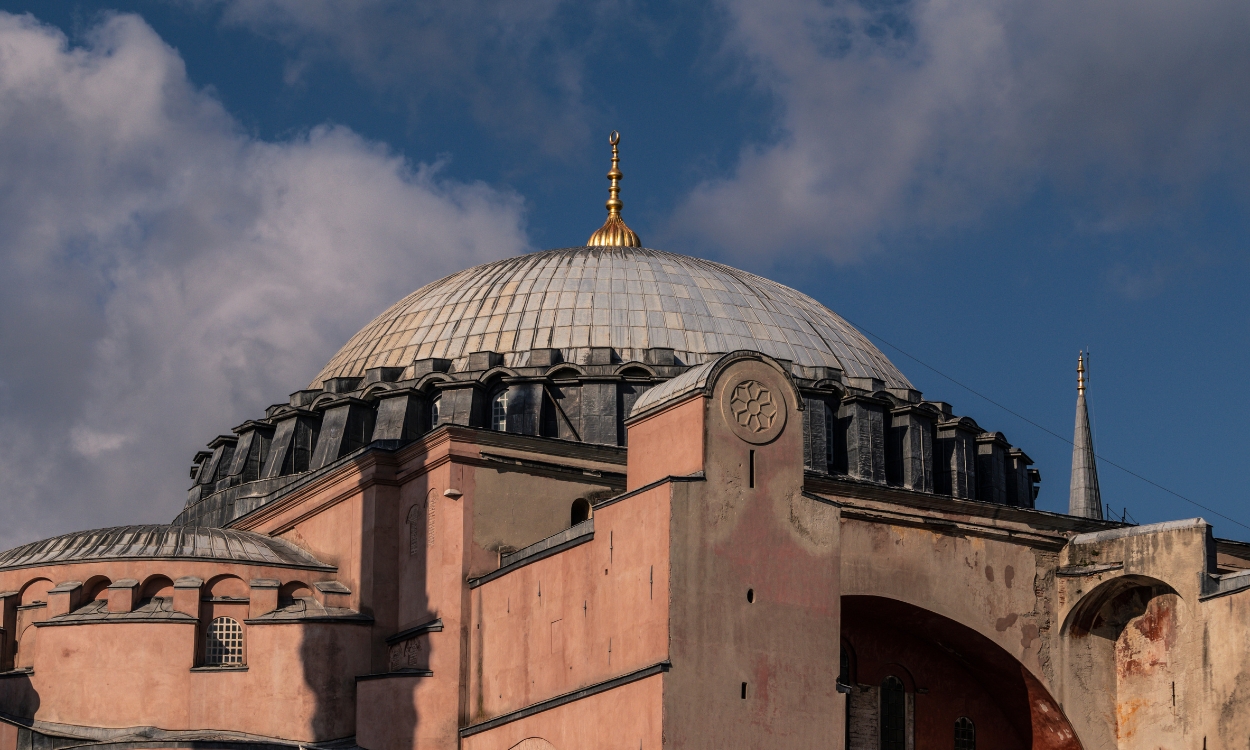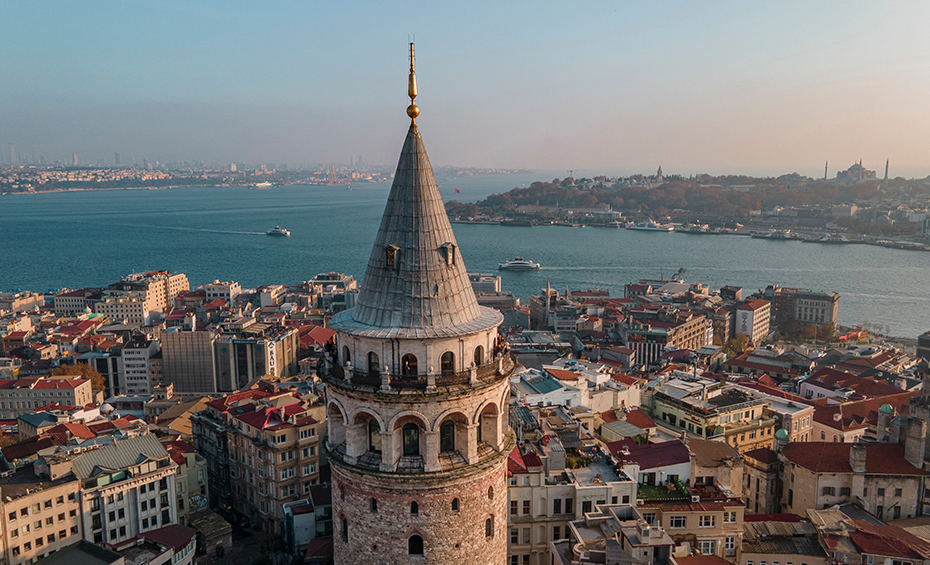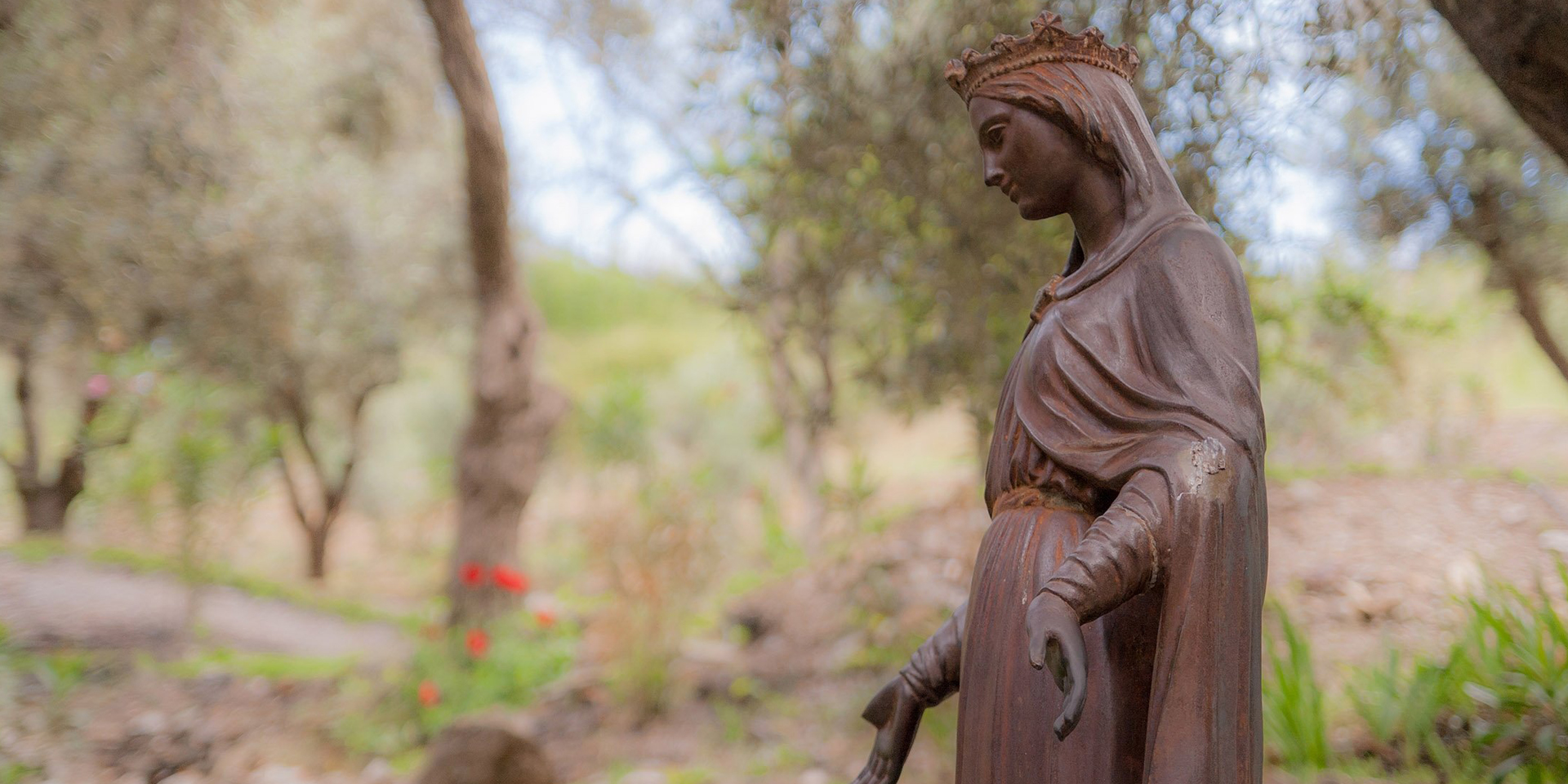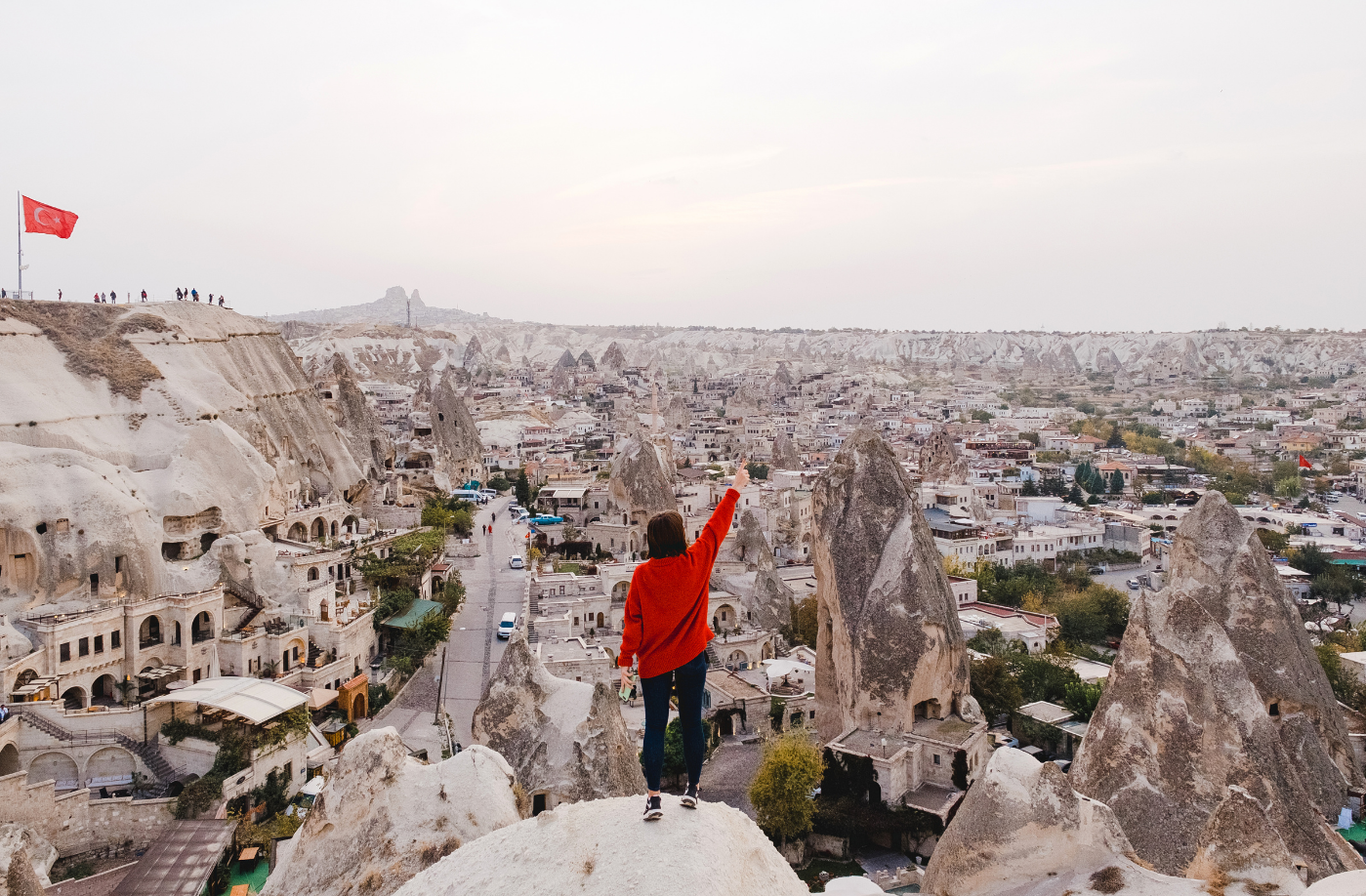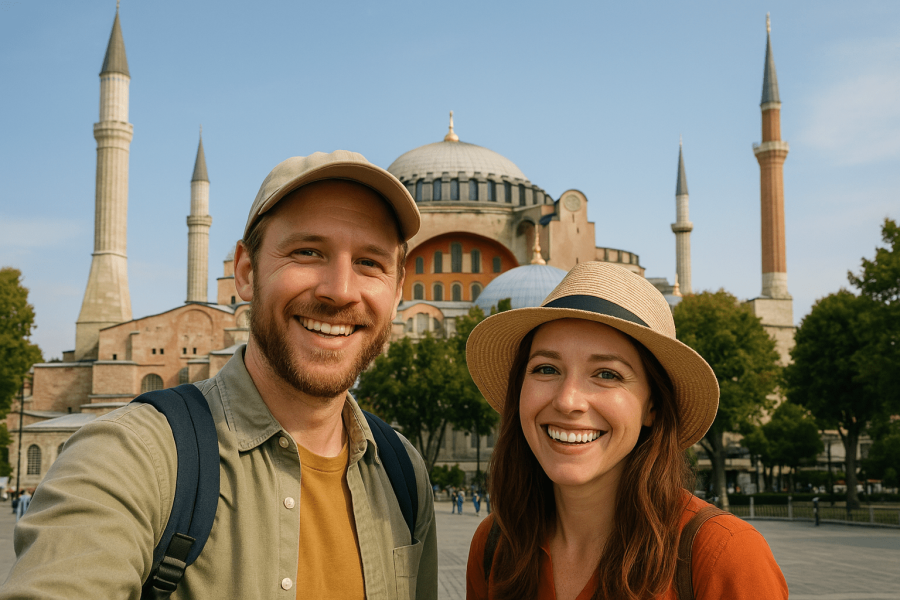Istanbul, the city that bridged two continents and two millennia of Christian history, stands as one of the world’s most significant destinations for biblical tourism. As Constantinople, this magnificent city served as Christianity’s imperial capital for over a thousand years, preserving sacred sites, ancient churches, and Byzantine treasures that illuminate the faith’s evolution from a persecuted movement to a dominant world religion.
This comprehensive guide presents carefully curated biblical tour routes through Istanbul, designed to help Christian pilgrims, history enthusiasts, and spiritual travelers explore the city’s profound religious heritage. From the architectural marvel of Hagia Sophia to the living tradition of the Ecumenical Patriarchate, Istanbul’s biblical sites offer transformative experiences that connect modern visitors with Christianity’s Byzantine golden age.
Why Istanbul is Essential for Biblical Tourism
Istanbul’s significance in Christian history extends beyond its architectural grandeur. As Constantinople, the city hosted seven Ecumenical Councils that defined Christian doctrine, served as the seat of Eastern Christianity’s patriarch, and preserved classical Christian texts and traditions during periods when Western Europe struggled through dark ages.
The city’s strategic position made it Christianity’s eastern gateway, where Greek theological sophistication merged with Roman administrative genius to create Byzantine Christianity—a tradition that profoundly influenced Orthodox churches worldwide and continues shaping Christian practice across Eastern Europe, Russia, and the Middle East.
Constantine’s Christian Capital
When Emperor Constantine established Constantinople in 330 CE as “New Rome,” he deliberately created a Christian imperial capital free from Rome’s pagan associations. The city’s churches, monasteries, and religious institutions received imperial patronage, making Constantinople Christianity’s undisputed center for theological scholarship, liturgical development, and artistic expression.
Route 1: Byzantine Imperial Christianity Tour (Full Day)
This comprehensive route explores Istanbul’s most significant Byzantine Christian sites, revealing how imperial patronage shaped Christian architecture, theology, and worship practices.
Morning: Hagia Sophia – Christianity’s Architectural Crown
Begin your biblical Istanbul journey at Hagia Sophia, Emperor Justinian’s 6th-century masterpiece that remained Christianity’s largest church for nearly a thousand years. Despite its current status as a mosque, Hagia Sophia preserves remarkable Christian elements that testify to Byzantine faith and artistry.
Key Christian Features:
The building’s massive dome, spanning 31 meters, revolutionized church architecture and symbolized heaven’s vault descending to earth. Byzantine architects created a space where worshippers experienced divine transcendence through architectural innovation—a concept that influenced church design throughout the Christian world.
Byzantine Mosaics: Hagia Sophia’s surviving mosaics showcase Byzantine Christianity’s artistic sophistication. The Deesis Mosaic in the upper gallery depicts Christ as Pantocrator (ruler of all) flanked by the Virgin Mary and John the Baptist, demonstrating Byzantine iconographic traditions that defined Orthodox Christian art. The Imperial Door mosaic shows Emperor Leo VI prostrating before Christ, illustrating the Byzantine concept of symphony between church and state.
The South Gallery preserves additional mosaics including the Comnenus mosaic featuring Christ, the Virgin Mary, and Emperor John II Comnenus with Empress Irene, demonstrating how imperial donations supported the church. These artistic treasures survived centuries of transformation, offering direct connections to Byzantine Christian devotion.
Historical Significance: Hagia Sophia hosted coronations of Byzantine emperors, ecumenical councils, and daily liturgies that attracted pilgrims from across the Christian world. The church’s dedication ceremony in 537 CE prompted Justinian’s famous declaration: “Solomon, I have surpassed you,” referring to the Temple in Jerusalem.
Midday: Hagia Irene – Constantinople’s First Cathedral
Located within Topkapi Palace’s first courtyard, Hagia Irene predates Hagia Sophia as Constantinople’s original cathedral. Built by Constantine himself, this church witnessed crucial moments in early church history, including hosting the Second Ecumenical Council in 381 CE that finalized the Nicene Creed.
Architectural Significance: Hagia Irene’s structure showcases early Byzantine architecture’s development, with its cross-in-square plan and dome becoming templates for later Orthodox church design. The building survived Constantinople’s frequent fires and earthquakes, preserving authentic 6th-century Byzantine construction.
Iconoclastic Evidence: Unique among Istanbul’s churches, Hagia Irene displays a simple cross in its apse rather than figurative mosaics, reflecting the Iconoclastic period (726-843 CE) when Byzantine emperors banned religious images. This austere decoration provides rare physical evidence of theological controversies that divided Christianity for over a century.
Afternoon: Chora Church – Byzantine Art’s Pinnacle
The Chora Church (Kariye Museum), located near Istanbul’s ancient city walls, preserves Christianity’s most stunning Byzantine mosaics and frescoes. These 14th-century masterpieces represent Byzantine art at its zenith, created during the empire’s twilight years yet displaying undiminished artistic confidence.
Mosaic Cycles: The church’s interior features comprehensive mosaic cycles depicting Christ’s life, the Virgin Mary’s life, and Christ’s ministry. These narrative sequences function as visual theology, teaching biblical stories through sophisticated artistic compositions that rival any contemporary European religious art.
The genealogy of Christ mosaic in the main dome traces Jesus’s lineage from Adam through the Virgin Mary, while the outer narthex presents detailed scenes from Mary’s childhood, drawn from apocryphal sources popular in Byzantine tradition. The artistic quality, with figures displaying emotional depth and naturalistic movement, demonstrates Byzantine Christianity’s continued vitality despite political decline.
Fresco Masterpieces: The parekklesion (side chapel) contains magnificent frescoes including the Anastasis (Resurrection), showing Christ trampling the gates of Hades while liberating Adam and Eve from death. This powerful image encapsulates Orthodox theology’s emphasis on Christ’s victory over death, central to Eastern Christian understanding of salvation.
Evening: Byzantine City Walls – Christianity’s Fortress
Conclude the day exploring sections of Constantinople’s massive defensive walls, which protected Christian civilization from numerous sieges. The Theodosian Walls, stretching from the Sea of Marmara to the Golden Horn, enabled Byzantine Christianity’s survival for a millennium.
Historical Context: These walls preserved not only a city but Christianity’s cultural and theological heritage during periods when Western Europe faced Viking raids and Muslim expansion threatened from multiple directions. The walls’ successful defense during the Arab sieges (674-678, 717-718 CE) ensured Christianity’s continued presence in the eastern Mediterranean.
Route 2: Living Christianity Tour – Ecumenical Patriarchate (Half Day)
This route explores Istanbul’s continuing role in Christian life through active religious institutions that maintain ancient traditions.
Ecumenical Patriarchate – Orthodoxy’s Spiritual Center
The Patriarchal Church of St. George in Fener serves as the cathedral of the Ecumenical Patriarch, spiritual leader of 300 million Orthodox Christians worldwide. This living institution connects contemporary Orthodox Christianity with its Byzantine roots.
Patriarchal Significance: The Ecumenical Patriarch holds honorary primacy among Orthodox bishops, a position dating to Constantinople’s imperial era. Visiting the Patriarchate offers insights into Orthodox Christianity’s hierarchical structure and liturgical traditions that continue Byzantine practices.
Church Interior: St. George’s modest exterior belies its rich interior, featuring icons, relics, and liturgical furnishings that represent Orthodox Christian devotional traditions. The patriarchal throne, episcopal seats, and iconostasis (icon screen) demonstrate Orthodox worship’s visual and spatial theology.
Relics and Treasures: The church houses significant Christian relics including remains of Saints Gregory the Theologian and John Chrysostom, two of Christianity’s most influential theologians. These relics connect modern Orthodox Christianity with the patristic age when early church fathers defined Christian doctrine.
Fener Greek Orthodox College
The distinctive red-brick building overlooking the Golden Horn represents Greek Orthodox educational traditions in Istanbul. While primarily an educational institution, it symbolizes the Greek Orthodox community’s historical role in preserving Christian culture and learning.
Bulgarian St. Stephen Church
This unique iron church on the Golden Horn demonstrates 19th-century Christian diversity in Ottoman Istanbul. Built entirely from prefabricated cast iron panels, the church served Istanbul’s Bulgarian Orthodox community and showcases how various Orthodox traditions coexisted in the city.
Route 3: Underground Christianity – Cisterns and Early Worship (Half Day)
This specialized route explores Istanbul’s underground spaces that connect with early Christian history and symbolism.
Basilica Cistern – Sacred Space Transformed
The Basilica Cistern, Constantinople’s largest underground water reservoir, incorporates columns from earlier Roman temples and Christian buildings. The famous Medusa head columns demonstrate how Christian Constantinople repurposed pagan monuments, literally placing Christian civilization above defeated pagan gods.
Christian Symbolism: The cistern’s name derives from the Basilica Stoa, a large public square above the site. Byzantine engineers created this underground marvel to ensure the city’s water supply, vital for withstanding sieges that threatened Christian Constantinople.
Binbirdirek Cistern
The “Thousand and One Columns” cistern showcases Byzantine engineering’s sophistication in supporting Constantinople’s Christian population. These underground spaces, while functional infrastructure, reflect Christian civilization’s technical achievements that enabled the city’s role as Christianity’s eastern capital.
Route 4: Asian Side Biblical Heritage (Half Day)
Istanbul’s Asian shore preserves important Christian sites often overlooked by tourists focused on the historic peninsula.
Kadıköy (Ancient Chalcedon)
Kadıköy occupies the site of ancient Chalcedon, host to Christianity’s Fourth Ecumenical Council in 451 CE. This council defined Christ’s nature as fully human and fully divine, a doctrine central to mainstream Christian theology.
Council Significance: The Council of Chalcedon’s Christological definitions shaped Christianity’s development, though they also precipitated schisms with Oriental Orthodox churches. Walking Kadıköy’s streets connects visitors with this pivotal moment when bishops from across the Christian world gathered to define doctrine.
Üsküdar Byzantine Churches
Üsküdar preserves remains of Byzantine churches and monasteries, though most lie beneath Ottoman-era construction. Archaeological sites occasionally reveal early Christian structures, demonstrating Christianity’s presence across both sides of the Bosphorus.
Route 5: Museum Christianity – Artifacts and Texts (Half Day)
This route explores museum collections that illuminate Byzantine Christian life through material culture.
Istanbul Archaeological Museums
The archaeological museums complex houses extensive Byzantine Christian collections including sarcophagi, architectural fragments, and inscriptions. These artifacts document Christian life from Constantine through the empire’s final years.
Early Christian Sarcophagi: The museum’s collection includes ornately carved Christian sarcophagi featuring biblical scenes, demonstrating how early Christians adapted Roman funerary art to express Christian beliefs. The iconography reveals developing Christian symbolism during the faith’s transition from persecution to imperial religion.
Turkish and Islamic Arts Museum
Despite its name, this museum preserves significant Christian manuscripts and artifacts, including Byzantine Gospel books illuminated with gold and precious pigments. These manuscripts demonstrate the care Byzantine Christians invested in preserving and beautifying scripture.
Mosaic Museum
Located near the Blue Mosque, the Great Palace Mosaics Museum displays floor mosaics from Constantinople’s imperial palace. While many scenes depict classical themes, their preservation in a Christian palace reflects Byzantine culture’s complex relationship with classical heritage.
Specialized Biblical Tours
Photography-Focused Christian Heritage Tour
For photographers interested in Christian architecture and art, specialized tours emphasize optimal lighting conditions at various sites. Morning light at Hagia Sophia, afternoon illumination in Chora Church, and sunset views from the city walls create dramatic photographic opportunities.
Theological Deep-Dive Tours
Academically-oriented tours explore Byzantine theology through site visits combined with lectures on doctrinal development. These specialized experiences suit seminary groups, theology students, or deeply interested pilgrims seeking scholarly context for Istanbul’s Christian sites.
Liturgical Experience Tours
Tours coordinated with Orthodox liturgical services at the Patriarchate or other active churches provide opportunities to experience Byzantine worship traditions. Attending Divine Liturgy in Greek at St. George’s Cathedral connects visitors with worship practices dating to Constantinople’s imperial era.
Practical Planning for Biblical Istanbul Tours
Best Seasons for Christian Heritage Tourism
Spring (April-May) and autumn (September-October) offer ideal conditions for exploring Istanbul’s Christian sites. These seasons provide comfortable walking weather, though October experiences high tourist volumes requiring advance planning.
Winter Advantages: November through March brings fewer tourists and reduced prices, though shorter daylight hours limit daily touring potential. Churches and museums feel more contemplative without summer crowds, enhancing spiritual experiences.
Recommended Tour Durations
Comprehensive Christian Heritage: 4-5 days allows thorough exploration of all major sites with time for reflection and deeper engagement with Byzantine history.
Focused Byzantine Tour: 2-3 days covers essential sites including Hagia Sophia, Chora Church, and the Patriarchate.
Express Christian Overview: Full-day tours provide introductions to major sites, suitable for travelers with limited time or those combining Christian sites with broader Istanbul tourism.
Guided Tours vs Independent Exploration
Professional Guide Benefits: Expert guides provide historical and theological context that transforms site visits from sightseeing into meaningful Christian heritage experiences. Guides navigate Istanbul’s complex streets, manage admission logistics, and often access areas unavailable to independent tourists.
Independent Travel Advantages: Self-guided exploration allows flexible timing and personal contemplation at sites. Detailed guidebooks and smartphone apps provide historical information, though theological depth may be limited.
Combining Routes Strategically
Efficient tour planning combines geographically proximate sites while maintaining thematic coherence. The Imperial Christianity tour and Underground Christianity route share geographic areas, allowing combination into intensive full-day experiences.
Multi-Day Itinerary Example:
- Day 1: Hagia Sophia, Hagia Irene, Byzantine walls
- Day 2: Chora Church, Patriarchate, Fener district
- Day 3: Asian shore sites, archaeological museums
- Day 4: Orthodox liturgy attendance, personal reflection time
Dress Code and Etiquette
Most Christian sites require modest dress regardless of current function. Hagia Sophia, now a mosque, requires headscarves for women and appropriate covering for all visitors. Active churches appreciate respectful attire and quiet behavior during services.
Photography Restrictions: Hagia Sophia prohibits flash photography that might damage surviving mosaics. Some church interiors restrict photography during services. Always ask permission before photographing in active religious spaces.
Accessibility Considerations
Byzantine-era structures predate modern accessibility standards. Hagia Sophia offers some accommodations, but upper galleries require climbing stairs. Chora Church involves uneven surfaces. Visitors with mobility concerns should inquire about specific site accessibility before planning tours.
Cultural Context: Christianity in Modern Istanbul
Understanding Istanbul’s Christian sites requires acknowledging their existence within a predominantly Muslim society. Modern Turkey maintains a complex relationship with its Christian heritage, simultaneously promoting Byzantine sites for tourism while navigating religious and political sensitivities.
Interfaith Dialogue: Visiting Christian sites in Istanbul creates opportunities for interfaith understanding. Witnessing how Christian heritage is preserved and presented in a Muslim-majority country enriches both Christian pilgrimage and broader cultural appreciation.
Local Christian Communities: Istanbul retains small but vibrant Christian communities maintaining ancient traditions. Greek Orthodox, Armenian Apostolic, and Syriac Christians continue worship in historic churches, demonstrating Christianity’s living presence beyond tourism.
Beyond Tourism: Pilgrimage Preparation
For those approaching Istanbul’s Christian sites as pilgrimage rather than tourism, spiritual preparation enhances experiences.
Pre-Trip Study
Reading about Byzantine theology, church history, and the Ecumenical Councils provides context that deepens on-site understanding. Works by John Julius Norwich on Byzantium, Timothy Ware on Orthodox Christianity, or Robert Ousterhout on Byzantine architecture prepare pilgrims intellectually and spiritually.
Devotional Practices
Some pilgrims incorporate prayer routines at specific sites, attend Orthodox services, or schedule quiet contemplation time at each location. These practices transform tourism into pilgrimage, creating space for spiritual encounter alongside historical learning.
Connection with Home Faith Communities
Many pilgrims coordinate Istanbul visits with their home churches, sharing experiences through presentations, photo exhibitions, or written accounts. These connections extend pilgrimage benefits beyond individual travelers to entire faith communities.
Special Events and Celebrations
Ecumenical Patriarchate Feast Days
Major Orthodox feast days at the Patriarchate feature elaborate liturgies demonstrating Byzantine worship traditions. Epiphany (January 6) includes the traditional blessing of waters ceremony, while Pascha (Orthodox Easter) showcases the faith’s most significant celebration.
St. Andrew’s Feast Day
November 30 celebrates St. Andrew, Constantinople’s patron saint and the Ecumenical Patriarchate’s founder. Special services and cultural events mark this important date in Orthodox Christianity’s calendar.
Conclusion: Istanbul’s Continuing Biblical Significance
Biblical Istanbul offers more than historical tourism—it provides tangible connections to Christianity’s imperial age and continuing Orthodox traditions. Walking Hagia Sophia’s sacred spaces, viewing Chora Church’s magnificent mosaics, and visiting the living Patriarchate creates profound encounters with Christian heritage that books cannot replicate.
Istanbul’s Christian sites bridge ancient and modern, East and West, imperial grandeur and humble devotion. Whether you’re a pilgrim seeking spiritual renewal, a scholar researching Byzantine Christianity, or a traveler exploring religious history, Istanbul’s biblical heritage delivers transformative experiences that illuminate Christianity’s complex evolution and enduring vitality.
These carefully designed tour routes ensure comprehensive exploration of Istanbul’s Christian treasures while providing flexibility to accommodate various interests, timeframes, and spiritual needs. Each route reveals different dimensions of Constantinople’s role as Christianity’s eastern capital, collectively presenting a complete picture of the city’s extraordinary biblical significance.

